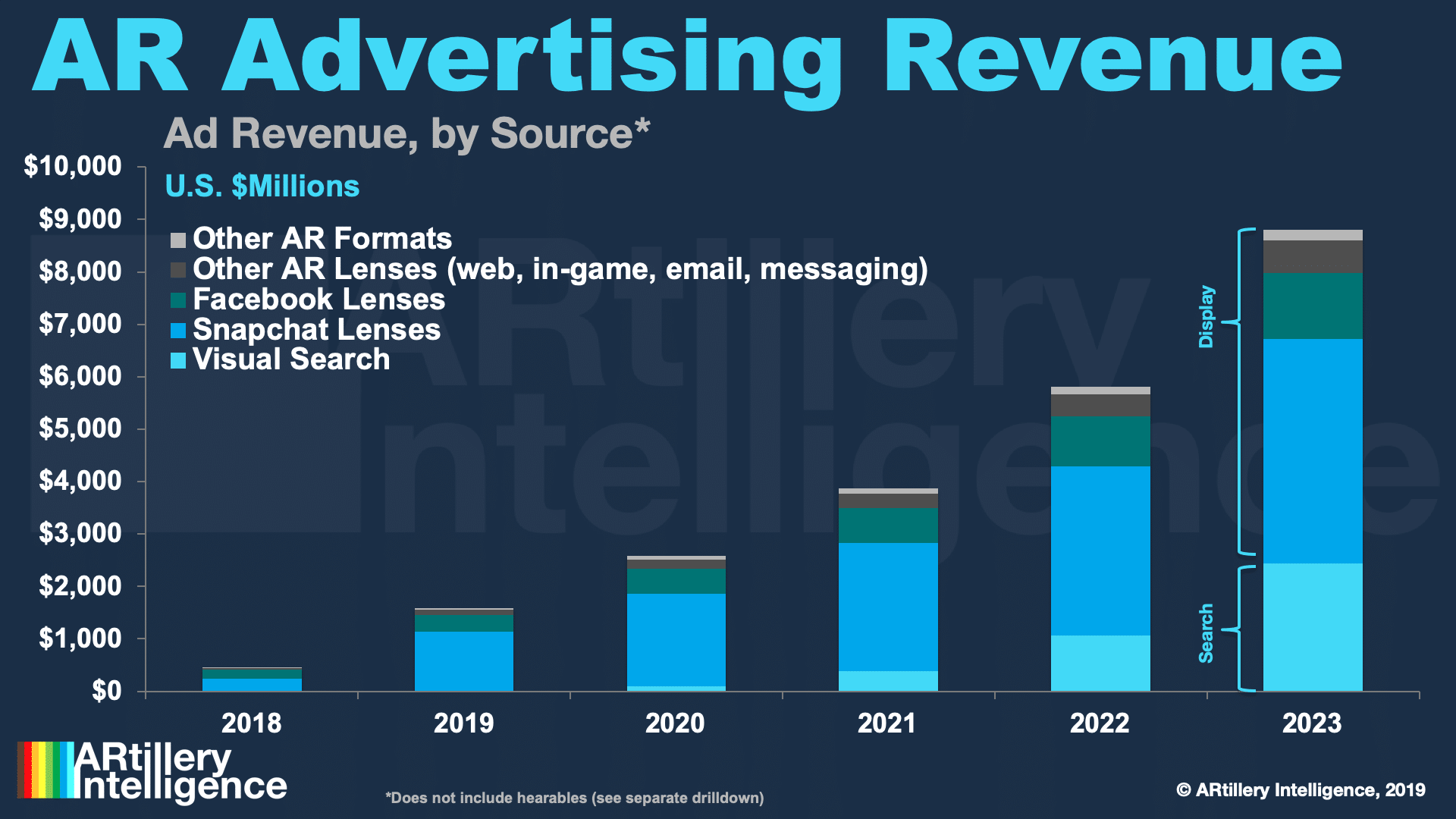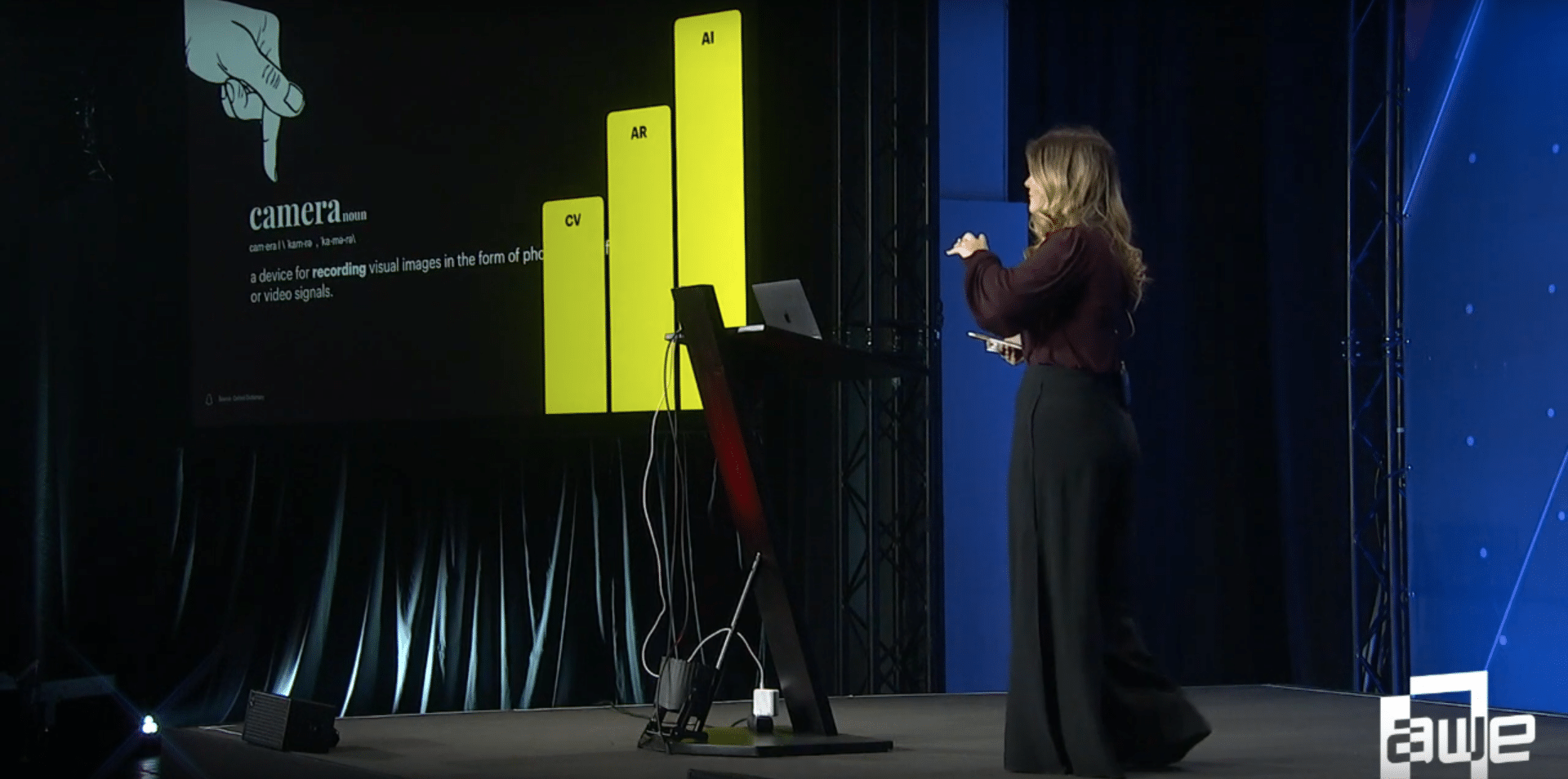
This post is adapted from ARtillery Intelligence’s report, Lessons From AR Revenue Leaders, Part I: Snap. It includes some of its data and takeaways. More can be previewed here and subscribe for the full report.
A lot can be learned from consumer AR’s early leaders. What are they doing right? How are they engaging users? And how are they making money? These are key questions in AR’s early stages, as there’s no standardized playbook quite yet. This results in lots of experimentation.
This exercise includes pinpointing fitting AR use cases, as well as more granular strategies around user experience (UX). What types of AR interactions resonate with consumers? And what best practices are being standardized for experience and interface design?
Equally important is the question of AR monetization and revenue models. Just as user experience is being refined, questions over what consumers will and won’t pay for are likewise being discovered. The same goes for brand spending behavior for sponsored AR experiences.
Picking up where we left off last week, Snap is one company leading the way with all of the above. It has built a real revenue-generating business around AR lenses. A lot of this comes down to a virtuous cycle: user engagement attracts lens developers, more users… then advertisers.

The Three Pillars
Given Snapchat’s leading position in AR engagement and revenue, its tactics are ripe for examination to draw out transferable lessons. In one sense, it’s doing the AR industry a favor by large-scale experimentation to uncover demand signals and formats that work.
Much of its AR success traces back to its focus on the camera. This foundational principle makes Snapchat natively primed for AR. Beyond that, it’s executed well and leaned into AR as a core use case. This makes AR more of an internal priority and central focus than it is for competitors.
“It’s really the lens of a camera that gives you the window into human experience,” said Snap’s Carolina Arguelles at AWE Europe. “It connects the physical world with the power of the Internet… So our strategy and focus with the camera is all about how we bring [it] into this new era.”
To get there, Arguelles delineates three pillars of Snap’s AR strategy: Access, Adoption and Content. Starting with access, it’s all about mobile. Though Snap is planting seeds for a wearables future with Spectacles camera glasses, the near-term play is all about smartphone ubiquity.
“If you look at the change from 2008’s 220 million smartphone owners to today’s 2.8 billion, [that’s] a huge increase,” Arguelles said. “That’s important because accessibility completely changed. AR ten years ago didn’t come to life because being able to render AR from an everyday consumer standpoint was extremely difficult. But now everyone has a camera in the palm of their hand.”

Pillar 1: Access
Beyond smartphone ubiquity, the internal camera’s innovation cycles have further amplified AR’s accessibility. It’s now the main feature of today’s smartphones in terms of iPhone and Android device marketing and differentiation. This hardware prioritization lays a strong foundation for AR.
“When we think about consumer adoption of AR — and we know that the camera is the first step into getting into an AR experience — we need to prioritize how quickly someone can jump into that experience,” said Arguelles. “We say we’re a camera company, and we mean [that] we believe the camera is more than taking photos… When you open Snapchat, it opens straight to the camera.”
This is a key component of Snapchat’s AR success. Camera access reduces friction in getting to AR, compared to social media where it’s discovered in a feed. The result is strong performance and engagement, including 3.5 billion snaps per day and 250 million minutes of daily interaction.
“It’s completely at odds with what you expect when you open up an app which is a feed — which we’ve been trained as people in the digital era,” Arguelles said. “This UX of opening up straight into the camera feels weird but it’s intentional… because we wanted the mindset within this app to be camera-first, to be create-first, to be look-around first… not lean-back, and not just consume.”

AR: Where to Put it? What to Call It?
The lesson in Snapchat’s camera-forward approach is transferrable to others. It’s all about making AR accessible and in users’ path. AR is too early and unproven for users to go out of their way to find it. This is the “training wheels” concept we often cite as an early-stage AR success factor.
“The easier you can make it for someone to jump right into AR is going to be important because it’s so new,” said Arguelles. “The strategy other people should focus on if they want to drive more growth with AR is reducing the friction in access to the camera [and] AR. The more steps you have and the more buried it is… the less people you are going to have enter that experience.”
Another key success factor is marketing. This comes after choosing what to build and where to put it, and moves into what to call it. This seems trite but can largely impact adoption. Snapchat is AR’s engagement leader… without ever saying the term “AR” in a user-facing way.
“Before you adopt something, you have to understand it, said Arguelles “Augmented Reality is a tough term to understand if you’re an everyday consumer… We’re in an industry that for the everyday consumer, the technical terms we use and how we describe things just don’t work. We need to think about how to talk to the everyday consumer.”
Sticking with semantics, it’s also about the “language” of millennials and Gen Z in terms of how they conceive and use the camera. Photos have replaced text, which replaced phone calls as a way to communicate. AR feeds into that ethos, and ar companies should “know the language.”
“When you think about camera usage and you think about this younger generation and how you want to connect with them, said Arguelles. “Whether you’re a business, advertiser [or] creator, it’s really important that you start to understand the language that this generation uses.”
We’ll be back next week to dive into the second pillar: Adoption. Check out the full report here.
For deeper XR data and intelligence, join ARtillery PRO and subscribe to the free AR Insider Weekly newsletter.
Disclosure: AR Insider has no financial stake in the companies mentioned in this post, nor received payment for its production. Disclosure and ethics policy can be seen here.
